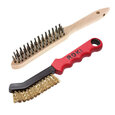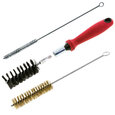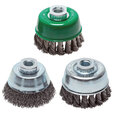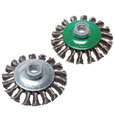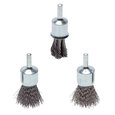Wire Brush Pipe Cleaner
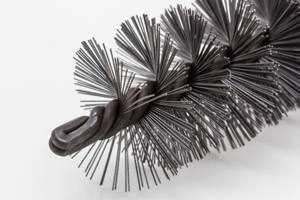
Figure 1: Wire brushes clean rust and scale from pipe surfaces
Pipe cleaning brushes have wire bristles for various pipe-cleaning tasks. They can remove rust, scale, and other debris from external and internal pipe surfaces. Wire brushes come in different designs to accommodate a variety of pipe materials and sizes. This wire brush overview covers the variety of wire brushes available, how they work with different pipe materials and sizes, and how to clean rust and scale off of a pipe.
Table of contents
View our online selection of wire brushes!
Wire brush designs
There are several wire-cleaning brush designs used to clean pipes. First, the cleaning application can determine which bristle material to choose. Then, the pipe's properties (e.g., length and width) can determine the brush shape.
Bristle materials
Tube cleaning brushes typically have steel, brass, or nylon bristles. Choosing between these materials depends on the pipe material and the cleaning application.
- Steel bristles: Steel bristles are the most abrasive and durable of the three material options. These bristles are best suited for heavy-duty tasks such as removing rust, scale, and old paint from metal pipes. They can, however, scratch or damage softer materials. Steel bristles are unsuitable for stainless steel or other non-ferrous metal pipes, as they can cause cross-contamination, leading to rust.
- Brass bristles: Brass bristles are softer than steel, making them more suitable for clean pipes made of softer materials, such as copper, aluminum, brass, and bronze.
- Nylon bristles: Nylon bristles are suitable for light-duty cleaning tasks on pipes of any material. They can remove soft debris or contaminants. Also, Nylon bristles can be used with cleaning solvents or chemicals that can damage metal bristles.
- Finish: Steel and brass bristles leave a brushed or roughened finish, while nylon bristles leave a smoother finish.
Brush shape
Hand wire brush
A hand wire pipe brush has stiff bristles secured in a handle, usually made of wood or plastic. The bristles are typically arranged in rows and can be straight or crimped. Hand wire brushes are often used for cleaning a pipe that is not too long or too narrow.
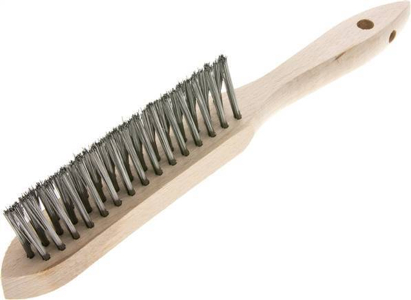
Figure 2: Hand wire brushes are straightforward and easy to use with short and wide pipes
Tube wire brush
A tube wire brush, also known as a tube brush or pipe brush, is specifically designed for cleaning cylindrical objects, such as pipes and tubing. This long wire brush has a cylindrical design with stiff bristles around a central wire spine. This design allows the brush to reach inside pipes and tubes to scrub away dirt and debris.
Tube wire brushes vary in length, diameter, and bristle stiffness, making them suitable for various pipe sizes and debris types. Some tube wire brushes have a handle, whereas others are designed to connect to power tools or rotated devices for automated cleaning.
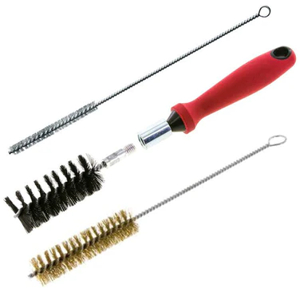
Figure 3: Tube wire brushes come in a variety of lengths and diameters
Cup wire brush
Cup wire brushes have bristles attached to a cup-shaped base. This design allows the bristles to be spread out in a semi-circle, providing a wider area for cleaning. The brush's base attaches to a rotating device, like a drill or angle grinder.
Cup wire brushes are not usually the first choice for pipe cleaning because of their shape. However, they can be used in certain applications, such as cleaning exterior surfaces or pipe ends. These brushes are also used to clean and deburr the interiors of wider pipes and tubes.
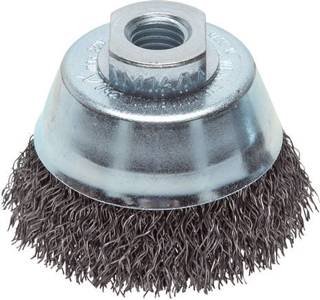
Figure 4: Cup wire brushes are not often used in pipe cleaning applications but do have some specific applications
Wire wheel brush
A wire wheel brush has bristles radiating from a central hub that can be attached to various power tools. Wire wheel brushes come in various sizes, shapes, and wire configurations. This makes them useful for several different applications, such as cleaning wide surface areas or hard-to-reach areas. Therefore, wire wheel brushes can be suitable for cleaning the inside and outside of a pipe.
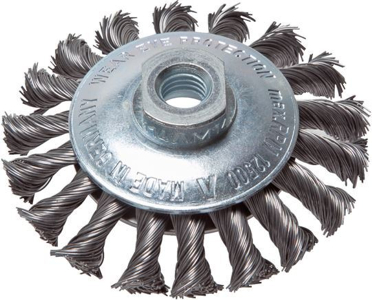
Figure 5: A wire wheel brush
Shank wire brush
Also known as an end wire brush, a shank wire brush is specifically designed to clean areas that are hard to reach, such as the insides of pipes. This brush consists of a bundle of bristles secured together at one end, usually by a metal ferrule. The bundle attaches to a long, slender metal stem or shank, which can be inserted into a power tool such as a drill.
A shank wire brush's primary advantage is its slim design, which can be inserted into the narrow interiors of pipes or tubes. The shank provides the reach, while the wire bundle provides the cleaning action.
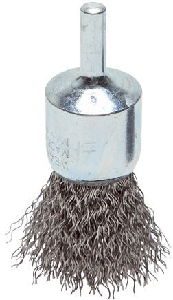
Figure 6: A shank wire brush is designed for cleaning hard-to-reach surfaces
Cleaning a pipe with a wire brush
Use a tube cleaning wire brush to remove rust, scale, old paint, and other debris from a pipe's outer and inner surfaces. Each pipe cleaning job can be unique, so adjust the following steps as necessary to fit specific needs:
- The right brush: Select the right brush for the task. Consider the pipe's material and the debris that needs to be removed. Steel bristles are for heavy-duty jobs, brass bristles are for softer pipe materials, and nylon bristles are for light-duty tasks for any pipe material.
- Safety: Prepare and wear personal protective equipment (personal protective equipment) such as gloves and safety glasses to protect against dust and flying debris.
- Prepare the work area: Remove the pipe from its position to make cleaning easier. Ensure enough light and easy access to the pipe's surfaces if not possible.
- Start cleaning: Move the brush back and forth along the pipe, applying moderate pressure. Clean all areas where rust and debris may accumulate, including joints and corners.
- Inspect and repeat: After cleaning, inspect the pipe's surface for any remaining debris. Repeat the cleaning process if necessary.
- Final clean: After cleaning with a wire brush, use a cloth or softer brush to remove any loose debris left on the pipe's surface.
- Post-cleaning inspection: Finally, inspect the pipe for any signs of damage during the cleaning process. If any damaging scratches were made, smooth the surface before using the pipe again.
- Preventative measures: Consider applying a protective coating to the pipe's surface if appropriate to prevent future build-up. This is especially important for pipes exposed to harsh environmental conditions.
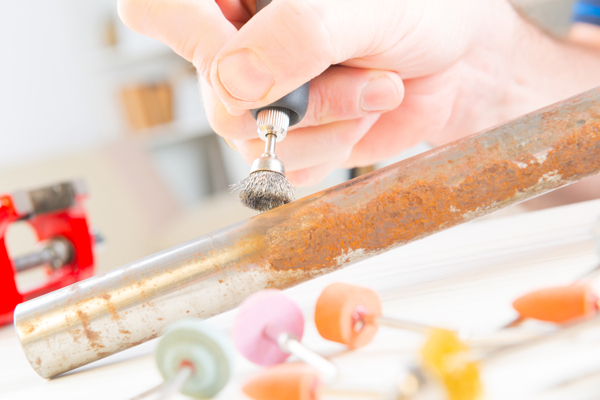
Figure 7: Wire brushes excel at cleaning rust from a pipe
When to replace the pipe
Periodic pipe cleaning can significantly extend a pipe's useful lifetime. However, a pipe will eventually degrade so far that cleaning no longer solves the problem, and the pipe needs to be replaced. Consider the following to determine whether to clean the pipe or replace it altogether:
- Extent of rust and scale: If the rust and scale have only affected the surface of the pipe, cleaning with a wire brush should be sufficient. However, if the rust and scale have eaten through the pipe's wall, causing holes or thinning the pipe, the pipe needs to be replaced.
- Structural integrity: Check the pipe for signs of bending, warping, or cracking. If the pipe appears structurally sound after cleaning, it should be OK to continue using it. However, signs of structural weakness suggest it is safer to replace the pipe.
- Frequency of cleaning: If the pipe needs to be cleaned frequently, the pipe may have deteriorated too much and needs to be replaced.
- Professional inspection: If there is any doubt, seek advice from a plumber or pipe inspector to evaluate the pipe's condition. These experts have the expertise and tools necessary to determine whether a pipe can be safely cleaned and reused.
FAQs
What is a wire brush used for in plumbing?
A wire brush is used to clean rust, scale, and other debris from pipes and valves in plumbing.
What is a pipe-cleaning brush?
A pipe cleaning brush cleans debris from pipe surfaces and can also deburr pipe ends before making connections.




